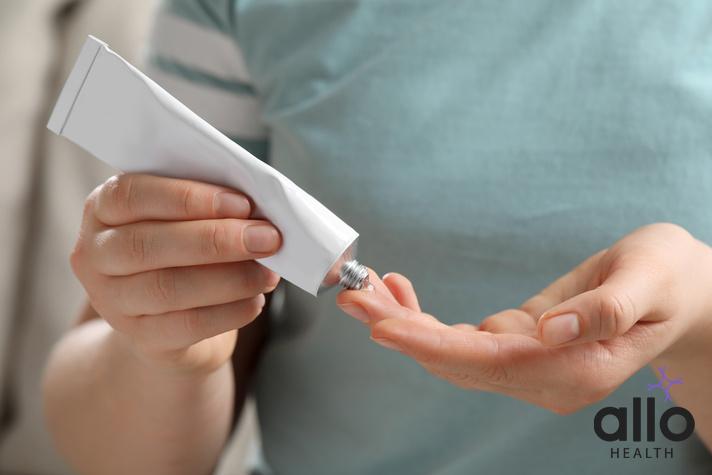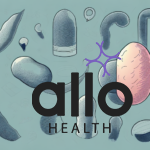How to Remove Foreskin at Home?

Allo Health is dedicated to personalized well-being, offering support and trusted information tailored to individual health goals. The platform emphasizes human-generated content, led by a distinguished medical team of experts, including physicians and sexual health specialists. Their commitment to credibility involves rigorous fact-checking, authoritative research, and continuous updates to ensure accurate, up-to-date information. Allo Health's unique approach goes beyond conventional platforms, providing expert-led insights and a continuous commitment to excellence, with user feedback playing a crucial role in shaping the platform's authoritative voice.

Dr. Aswathi P T earned her MBBS degree and completed her internship at Government Medical College, Kozhikode, and possess diverse professional background spanning 3.5 years. Her experience includes a wide range of healthcare settings, including health centers, hospitals, and teleconsultation services.
Why This Was Upated?
Our experts continually monitor the health and wellness space, and we update our articles when new information became available.
Updated on 18 December, 2023
- Article was updated as part of our commitment to diversity, equity, and inclusion.

"The following blog article may discuss medical treatments and interventions. However, it is important to note that the information provided is for general educational purposes only and should not be considered as a substitute for professional medical advice, diagnosis, or treatment. Always seek the guidance of a qualified healthcare professional for personalized medical advice.
Book consultation
Medical treatments are complex and should be tailored to individual circumstances. The information presented in this blog may not be applicable to everyone, as each person's medical condition, history, and needs are unique. Only a qualified healthcare professional can evaluate your specific medical situation, consider relevant factors, and provide appropriate recommendations for diagnosis, treatment options, and monitoring.
It is crucial to note that self-diagnosis, self-medication, or relying solely on the information provided in this blog for treatment decisions can have serious health consequences. "
Foreskin removal, commonly referred to as circumcision, is a procedure that has both medical and cultural significance. This guide is there to provide clear and detailed information about how to remove foreskin at home, its benefits, risks, and alternatives. It involves specific risks and benefits, and the decision should always be made after thorough consultation with a healthcare professional.
What is Foreskin Removal?
Foreskin removal, widely known as circumcision, is a medical procedure involving the surgical removal of the foreskin, a piece of skin covering the head of the penis. This practice can be undertaken for various reasons, encompassing medical, cultural, and health-related factors.
Key aspects of foreskin removal include:
- Urinary Tract Infection and Circumcision: Circumcision can reduce the risk of urinary tract infections in males, particularly in newborns and young children.
- Medical Treatment and Alternatives: While circumcision is one method to address certain penile conditions, alternative treatments like antifungal creams, antibiotic creams, hydrocortisone cream, and topical steroid cream can be effective for milder issues.
- Tight Foreskin Solutions: Conditions like phimosis, where the foreskin is too tight, often lead to considering circumcision. Topical steroids can sometimes be an alternative treatment option.
- Circumcision in Different Life Stages: The decision about circumcision varies with age. Circumcision for newborns is a common practice, while circumcision in adulthood involves more complex considerations.
- Consultation for Circumcision Surgery: It’s crucial to have a consultation with a healthcare professional to discuss methods of adult circumcision, the potential need for blood thinner medication, and to understand the entire process and its implications.
Foreskin removal or circumcision is a significant medical procedure that can be performed for various health, cultural, or personal reasons.
Note: It involves specific risks and benefits, and the decision should always be made after thorough consultation with a healthcare professional.
Benefits of Removing Foreskin
Circumcision has several benefits that are both medically and culturally recognized. These benefits can vary depending on the individual’s age, health status, and the reasons for undergoing the procedure. Here are some key benefits of circumcision:
- Reduction in Urinary Tract Infections: Circumcision can significantly lower the risk of urinary tract infections, particularly in young boys and infants.
- Decrease Risk of Sexually Transmitted Infections: Studies suggest that circumcision can reduce the risk of certain sexually transmitted infections, including HIV.
- Prevention of Penile Problems: Circumcision can prevent conditions like tight foreskin (phimosis) and balanitis, an inflammation that can occur in uncircumcised penises.
- Cancer Prevention: There is a link between circumcision and a reduced risk of penile and prostate cancer.
- Make it Easier to Maintain Hygiene: Circumcision makes it simpler to clean the penis, thereby reducing the risk of bacterial and fungal infections.
- Benefits in Adulthood: Circumcision in adulthood can resolve medical issues such as persistent pain, recurrent infections, or phimosis.
- Reduced Risk of Foreskin Injuries: Circumcision eliminates the risks associated with injuries to the foreskin, such as tears and scars.
- For Cultural and Religious Practices: For many, circumcision is an important cultural or religious ritual, providing a sense of belonging and identity.
It’s important to note that while circumcision has these potential benefits, it is also associated with certain risks and complications. Therefore, the decision about circumcision, whether for newborns, children, or adults, should be made after careful consideration and consultation with a healthcare professional.
Note: The procedure should be performed in a medical setting to minimize risks like infection and ensure proper care during recovery.
Risks and Complications of Removing Foreskin at Home

Performing circumcision at home carries significant risks and complications, which can lead to serious health concerns. Here are some of the key risks and complications associated with attempting a home circumcision procedure:
- Risk of Infection: Performing circumcision outside of a sterile medical environment significantly increases the risk of both bacterial and fungal infections. These infections can lead to severe complications if not treated promptly.
- Improper Surgical Technique: Without proper medical training, there’s a high risk of incorrect surgical technique, leading to partial or uneven removal of the foreskin. This can result in irregular healing and may require further medical intervention.
- Excessive Bleeding: Circumcision involves cutting skin and blood vessels. Performing this procedure at home can lead to uncontrolled bleeding, especially in individuals with conditions like hemophilia or those on blood thinners.
- Inadequate Pain Management: In a medical setting, appropriate pain medicines are administered to manage discomfort. At home, there is a risk of inadequate pain relief, leading to unnecessary and severe pain.
- Risk of More Severe Complications: Complications such as restricted blood flow to the penis or damage to the penis head can occur. These complications can have long-lasting effects on urinary and sexual function.
- Signs of Infection May Go Unnoticed: Without medical knowledge, signs of infection or other complications might not be recognized early, delaying essential treatment.
- Lack of Emergency Support: If complications arise during a home procedure, immediate medical support is not available, which can be life-threatening in cases of severe bleeding or infection.
- Experience Persistent Pain and Discomfort: Improper technique can lead to persistent pain, discomfort during urination, or discomfort in the area due to improper healing.
- Have Psychological Impact: An improperly performed circumcision can have psychological impacts, especially if the outcome is cosmetically or functionally unsatisfactory.
- Legal and Ethical Concerns: Performing medical procedures at home without a license can have legal implications, and there are ethical considerations, especially when the procedure is performed on minors.
Note: Given these significant risks and potential complications, circumcision should always be performed by a qualified healthcare professional in a proper medical setting. This ensures that the procedure is done safely, with appropriate pain management, sterile techniques, and immediate access to emergency care if needed.
Alternatives Treatments

When considering alternatives to performing circumcision at home, it’s important to explore various medical treatments and consult healthcare professionals. Here are some key alternative treatments:
- Topical Steroids: For conditions like tight foreskin (phimosis), topical steroid creams can help in loosening the foreskin. This treatment is often the first recommendation for mild phimosis.
- Antifungal and Antibiotic Creams: If the foreskin issue is due to a fungal or bacterial infection, applying antifungal or antibiotic creams as prescribed by a doctor can be an effective treatment.
- Hydrocortisone Cream: In cases of inflammation or minor infections, a healthcare professional might recommend hydrocortisone cream as a part of the treatment plan.
- Do Foreskin Stretching Exercises: For mild cases of tight foreskin, healthcare professionals might suggest gentle foreskin stretching exercises. These exercises can help increase the elasticity of the foreskin without the need for surgery.
- Laser Method: In some cases, less invasive methods like laser treatment can be considered as an alternative to traditional circumcision. This should be done under medical supervision.
- Consultation with Healthcare Professional: Before considering any treatment, it is crucial to consult with a healthcare professional. They can provide guidance on treatment options best suited to the individual’s condition.
- Different Treatment Options: Depending on the specific medical condition, a doctor might suggest other alternative treatments. Always discuss these options with a healthcare professional to understand their effectiveness and safety.
- Prescription Pain Medicine: If there is discomfort or pain associated with the foreskin, a doctor might prescribe medication for pain relief.
These treatments range from topical applications to less invasive surgical methods, and their suitability depends on the individual’s specific condition and health needs.
Note: Alternative treatments to circumcision at home should be explored under the guidance of a healthcare professional.
Conclusion
While foreskin removal can be a simple procedure for health reasons, it’s imperative to consider the risks, especially when contemplating at-home circumcision. Consulting with a healthcare professional is vital for a safe and informed decision.
Most Asked Questions
-
Can I perform circumcision at home?
It’s strongly advised not to attempt circumcision at home due to the high risk of complications like infection and improper removal. This procedure should always be performed by a qualified healthcare professional in a controlled medical environment.
-
What are the main benefits of getting circumcised?
Circumcision can offer several health benefits, including a reduced risk of urinary tract infections, certain cancers, and sexually transmitted infections. It also makes hygiene easier, as cleaning the penis becomes more straightforward.
-
Are there any significant risks associated with circumcision?
Yes, like any surgical procedure, circumcision has risks. These can include pain, bleeding, infection, and potential complications in healing. The risks can be higher in adult circumcision compared to newborns.
-
What alternatives are available if I don’t want to undergo circumcision?
Alternatives to circumcision include antifungal and antibiotic creams for infections, topical steroids for conditions like tight foreskin, and non-surgical methods like foreskin stretching exercises. It’s important to discuss these alternatives with a healthcare professional to determine the best course of action for your specific situation.






































